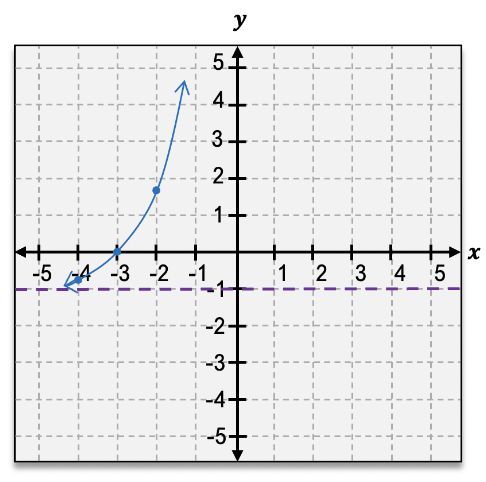Welcome back, everyone. By now, we've worked with a ton of different polynomial functions, and one of the most common and perhaps most basic polynomial functions we've seen is f(x)=x2. But if I take that x and that 2 and I swap them, I now have f(x)=2x, which is an entirely different type of function called an exponential function that we're going to have to evaluate and graph just as we have other functions. Now, I know seeing that variable in the exponent might seem a little bit strange at first, but here I'm going to walk you through the basics of exponential functions using a lot of what we already know about exponents themselves and what we know from working with other functions. So let's go ahead and get started.
Now looking at our function here, 2x, we have two different things going on. We have this base number of 2, and then we have the power that that base 2 is raised to, in this case, x. Now, in working with exponential functions, we need to consider a couple of different things about the base of our function. So in this case, we have 2. But the base of any exponential function needs to be a constant, so it can't be something with a variable that changes. It has to be positive. So we can't have any negative numbers as our base. And it also cannot be equal to 1. So something like 2 fits all of that criteria. Now when considering the exponent or the power of our exponential function, we only need to consider one thing, and that is that it contains a variable like x.
So it's something that can change, something like x. Now that we know a little bit about exponential functions, let's take a look at a couple of different exponential functions down here. So here we have this function f(x)=23x. And here we want to determine if this even is an exponential function. And if it is, then we can go ahead and identify both the power and the base.
So looking at this function here, I have 23 as that base. And I want to consider my three things constant, positive, and not equal to 1. So 2 thirds, it is constant. It is positive. And it is not 1. So it looks like we're good so far. Now looking at our power here, we have this power of x. We need to make sure our power contains a variable, which it already is a variable just by itself. So it looks like we are good here, and this is an exponential function. Now to identify our power and our base, we saw our power of x there, so our power is simply x by itself.
And then our base is 23. Now it's okay to have a base that's a fraction as long as it's constant and positive. Let's move on to our next example. So here we have f(y)=1y. Now our base here is 1. 1 is constant. It is positive, but it is 1, so it is not meeting that last criteria not being equal to 1. So I don't even have to look any further. I already know that this is not an exponential function. I don't need to worry about identifying my power in my base. 1y to the power of anything is just going to be 1, so that power of y doesn't even matter, which is why this isn't an exponential function at all.
Let's look at one final example here. Here we have 10x+1. And we want to identify if this is an exponential function. So here my base is 10. This 10 is constant. It is positive. And it is not 1. So we're looking good so far. Now looking at our power here of x+1, it does contain a variable. It has that x+1. It's not just the variable by itself. It's everything that our base is being raised to.
Now here, our base is this 10 because that's what's being raised to the power of x+1 and our base of 10. Now that we know how to identify an exponential function, let's go ahead and get into evaluating them. Now we're going to have to evaluate exponential functions for different values of f(x)=2x.
So to evaluate this for x. So here, f(4) is really just 24. Now, using my rules for exponents, I know that 24 is really just 2 times 2 times 2 times 2, 4 times, which will give me 16 as my final answer. Let's move on to our next example here and evaluate our function for x here, f(-3), gives me 2-3 because we're still using that same function here. Now whenever I have a negative in the exponent, that's totally fine. It just means that I'm really dealing with 1 over 23 because it's really a fraction.
Now wi





